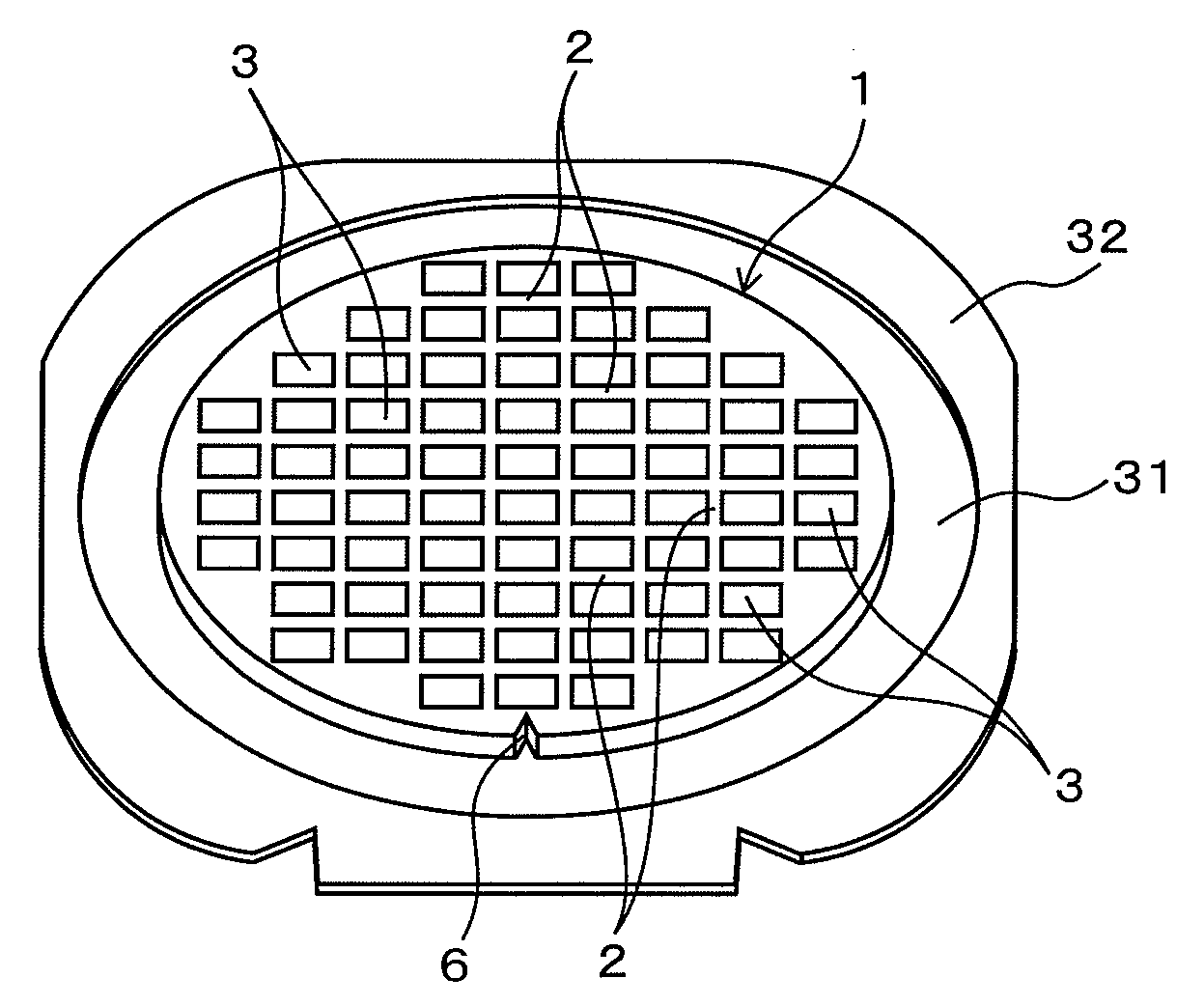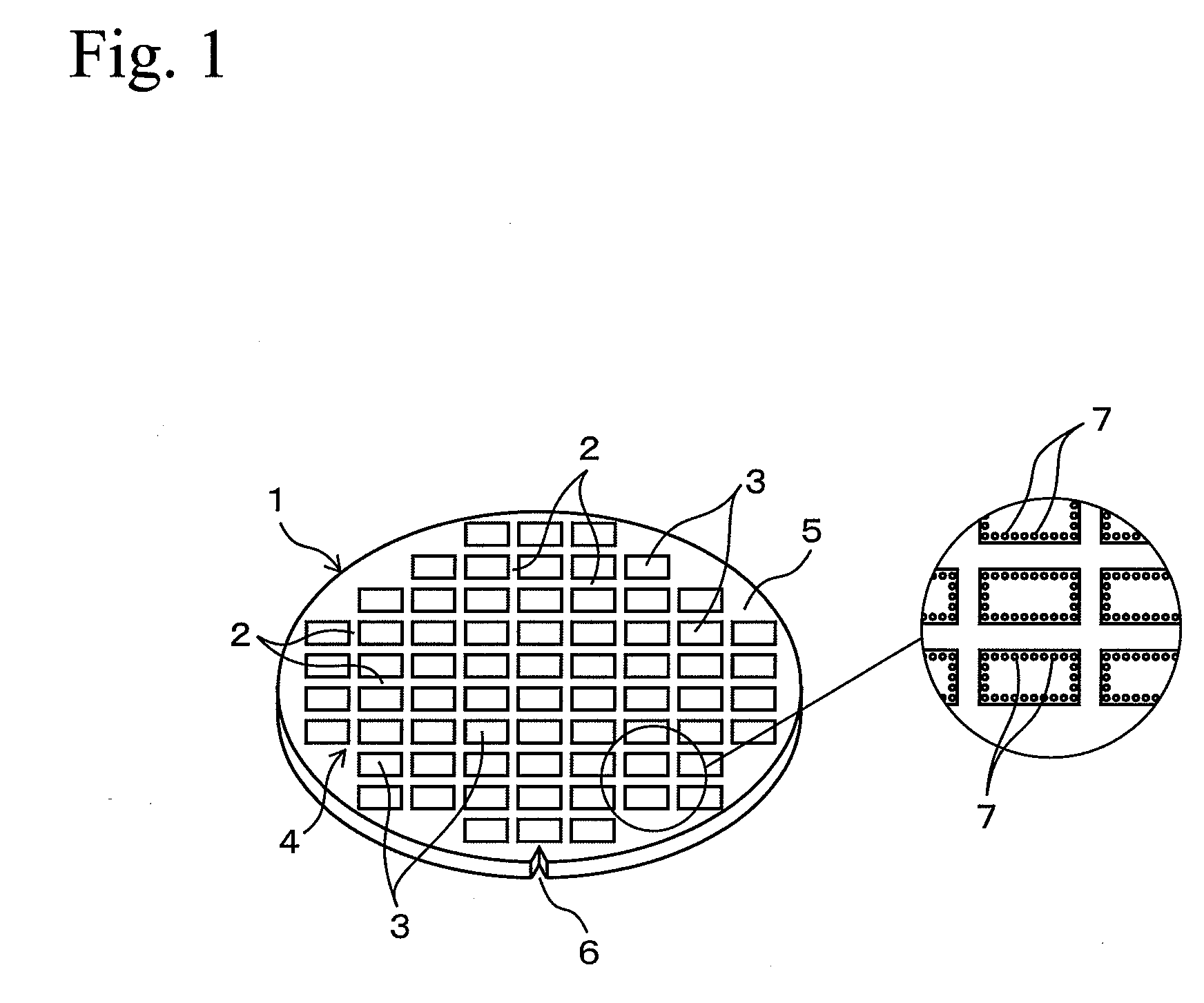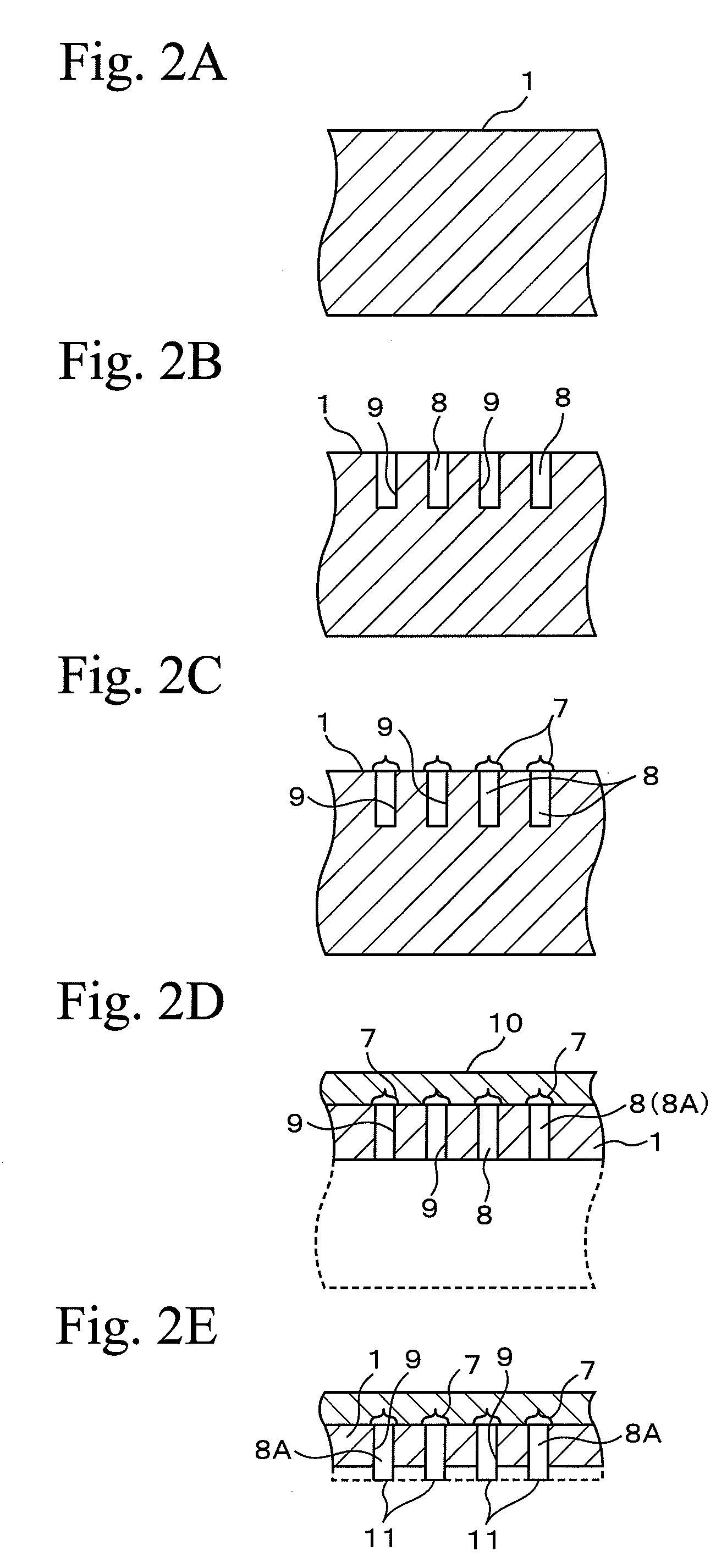Production Method for Stacked Device
a production method and stacking technology, applied in the field of producing devices, can solve the problems of reducing yield rate and difficulty in handling semiconductor wafers, and achieve the effects of improving productivity and yield ratio, smooth cutting, and easy and smooth cutting
- Summary
- Abstract
- Description
- Claims
- Application Information
AI Technical Summary
Benefits of technology
Problems solved by technology
Method used
Image
Examples
Embodiment Construction
[0026]One embodiment of a production method for semiconductor chips using the present invention will be explained hereinafter with reference to the drawings.
[0027]Reference numeral 1 in FIG. 1 denotes a disc-shaped semiconductor wafer (hereinafter referred to simply as a “wafer”) which is a material for producing semiconductor chips. For example, the wafer 1 is a silicon wafer having a thickness of about 600 μm. Plural rectangular semiconductor chips 3 (devices) are partitioned on the surface of the wafer 1 by grid-like predetermined division lines 2. An electronic circuit such as an IC (Integrated Circuit) or LSI (Large-Scale Integration) is formed on each surface of the semiconductor chips 3.
[0028]The plural semiconductor chips 3 are formed on a device forming region 4 having an approximately circular-shape which is concentric with the wafer 1. The device forming region 4 occupies most of the wafer. A ring-shaped peripheral extra region 5 on which the semicon...
PUM
| Property | Measurement | Unit |
|---|---|---|
| thickness | aaaaa | aaaaa |
| heights | aaaaa | aaaaa |
| thickness | aaaaa | aaaaa |
Abstract
Description
Claims
Application Information
 Login to View More
Login to View More - R&D
- Intellectual Property
- Life Sciences
- Materials
- Tech Scout
- Unparalleled Data Quality
- Higher Quality Content
- 60% Fewer Hallucinations
Browse by: Latest US Patents, China's latest patents, Technical Efficacy Thesaurus, Application Domain, Technology Topic, Popular Technical Reports.
© 2025 PatSnap. All rights reserved.Legal|Privacy policy|Modern Slavery Act Transparency Statement|Sitemap|About US| Contact US: help@patsnap.com



